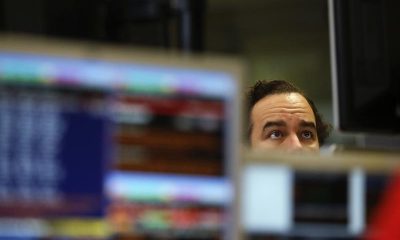Investing
I Turned $583 into $10 Million. Here’s How I Did It and 5 Lessons I Learned Along the Way Sure, you want to roll your eyes when you hear “day trading.” But, I turned the loss of my father and graduating college during the Great Recession into motivation to carve my path in life and do things differently from most.

Entrepreneur
I won’t keep you in suspense: I made $10 million by day trading.
That profession is the lightning rod of the investment world. It seems to generate strong opinions from everyone, even if many people have never done it. Hollywood and social media have popularized an inaccurate image of day trading, at least in my experience. They show caffeine-fueled 20-somethings betting the farm on meme stocks — sometimes using their mobile phones to place trades while stopped at red lights.
The reality of professional day trading is much different, but first, a bit of backstory. I got into day trading by accident. When I was 22, my father died. A few years later, I received an unexpected inheritance from him for $100,000.
I was an intern at an architectural firm in New York City and had someone manage the inheritance while I got on with my career. Long story short, the Great Recession hit, and I moved back home to Vermont. As I struggled to find meaningful work, I began to wonder if I could generate better investment returns than the pitiful job my “professional advisor” was doing.
If I was going to make ends meet through investment returns, I realized it would not be from bond income, dividends or a “buy and hold” strategy. I needed to invest in stocks that were going places soon.
Suffice it to say that I earned a graduate degree in day trading from the School of Hard Knocks. I had a bit of beginner’s luck, followed by giving those profits back and then some. I went through most of my inheritance and was down to the minimum amount necessary to keep a day-trading account open.
I was now divorced, and it was me and my dog in a farmhouse. When I wasn’t selling my furniture on Craigslist to stay afloat, I searched for patterns in my trades: What did my winning trades have in common, and when did I place losing ones?
I identified a few patterns, and the stark financial reality forced me to become highly disciplined at the computer. My trading emotions might sway up and down, but my trading actions had to stay within very narrow guardrails.
Related: How Cognitive Biases Can Impact Your Trading and Investment Decisions — and How to Reduce Their Effects
It began to work. I recouped my losses, then built a cushion. Over time I refined my trading principles, but one thing never changed: my losses happened when my emotions took over. The more disciplined I became, the better I did.
Professional day traders are a small community, and after a while, I developed a following on social media. I began to hear things like, “It’s cool that you became successful at day trading, but you started with an inheritance. Bet you couldn’t do it from scratch.”
Related: Day Trading: How To Get Started
I decided to see about that. On January 1, 2017, I opened an offshore account and had $583.15 to trade with after the first month of fees. I went offshore because a day trading account requires a minimum of $25,000 in the US. I decided to report my results — red or green — daily on YouTube.
In 44 days, I broke the $100,000 mark. In a little over two years, I crossed $1 million, and in January 2022, my account surpassed $10 million. I’ll be the first to say that my results are not typical. But even if you are not a day trader, you may benefit from several lessons I can derive from this experience.
1. It’s not for everyone
It’s important to know what not to conclude: that I did fairly well at the challenge does not mean that “anybody can do it.” Far from it. Day trading is risky. That risk can never be removed; it can only be minimized. I had been trading — winning and losing — for years before I created the challenge. I didn’t turn $583 into $10 million by getting lucky. It resulted from following a specific strategy over the course of over 20,000 trades.
2. The level of effort to become successful is far from even
You must put a disproportionate amount of effort into the system at the outset — and be prepared to handle a lot of disappointment, stress and loss — before you can hope to see consistent positive results. You can reduce but not eliminate that learning period by studying and applying what others learned before you.
Related: Learn How to Earn Passive Income Through Day Trading and Investments
3. Base hits are underrated in a home-run-focused world
There’s a Home Run Derby in Major League Baseball, but no Base-Hit Derby. Yet I made those millions from sticking to a base-hit strategy. In day-trading terms, a base hit is when you look to make ten or fifteen cents per share on a small-cap trade. That sounds trivially easy, right? Try it. Doing so is much harder than it seems because your emotions often beg you to go big or go home.
4. The first results are the hardest
The most difficult part of this challenge was making the first $25,000. Starting with $583, I had so little room for error, and even winning trades would add only a few hundred to that balance. No wonder many people first wash out of this business when the risk-reward ratio seems stacked against you, and you must stay highly disciplined.
Related: A Peek Into the World of Trading
5. Don’t take early profits off the table
Because those profits are the hardest to come by, resist the temptation to reward yourself. Delay your gratification and let those profits work for you. When your account is high five or six figures, you can reward yourself without hampering your progress. I split my profits into a Roth IRA and other accounts and later moved some money into accounts focused on long-term gains.
Of course, I’m biased, but day trading has taught me to be more disciplined in all aspects of my life. Every day the score resets to zero, and nothing but your actions will determine your results.
Read the full article here

-

 Side Hustles4 days ago
Side Hustles4 days agoWhy the Best CEOs Think Like Anthropologists
-

 Make Money5 days ago
Make Money5 days agoEarn More in 2025: Top 10 High-Yield Savings Accounts Revealed
-

 Side Hustles7 days ago
Side Hustles7 days agoLA Rental Prices Skyrocketing Despite Price Gouging Laws
-

 Side Hustles7 days ago
Side Hustles7 days agoHow to Craft Marketing Campaigns That Reach Multiple Generations
-

 Side Hustles5 days ago
Side Hustles5 days agoWhat to Do If TikTok is Banned — How to Protect Your Brand
-

 Passive Income5 days ago
Passive Income5 days agoHow Pets Can Promote Better Health and Well-Being in the Workplace
-

 Side Hustles5 days ago
Side Hustles5 days ago10 Roles That Are Surprisingly Well-Suited for Outsourcing
-

 Side Hustles6 days ago
Side Hustles6 days agoMeta Is Laying Off 5% of Its Workforce: Read the Memo


















